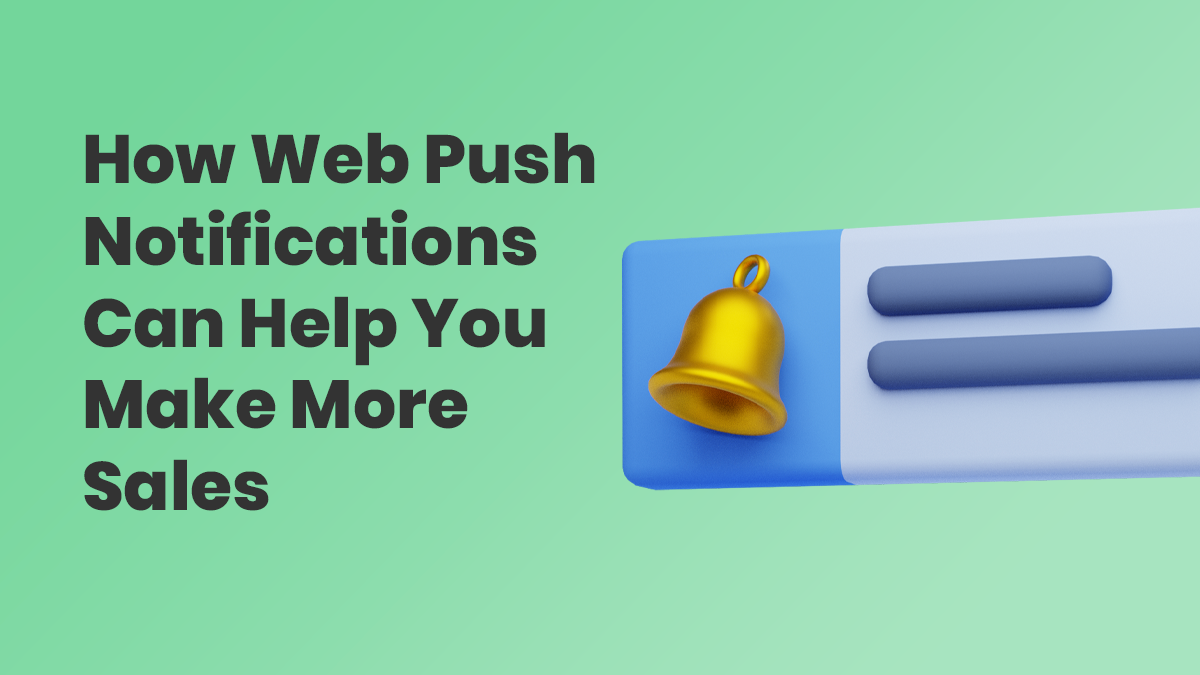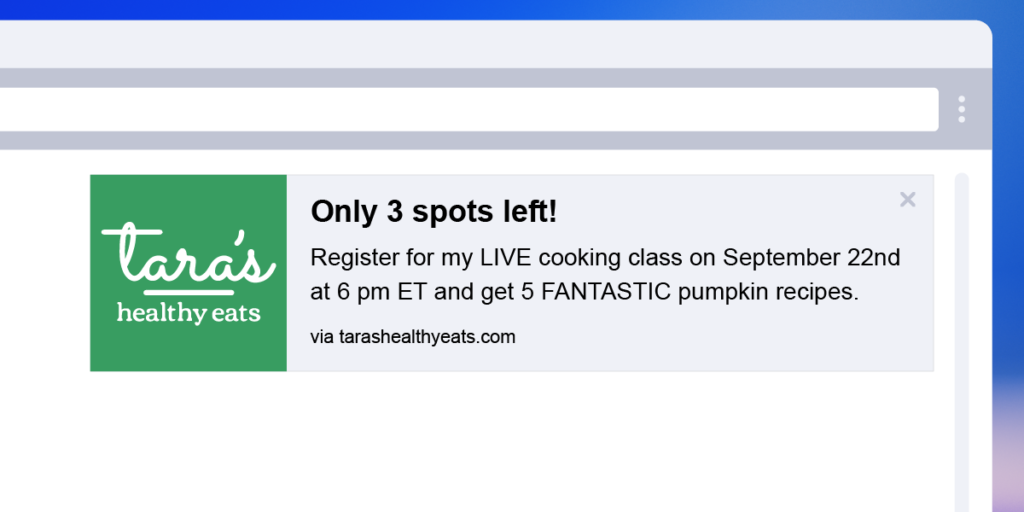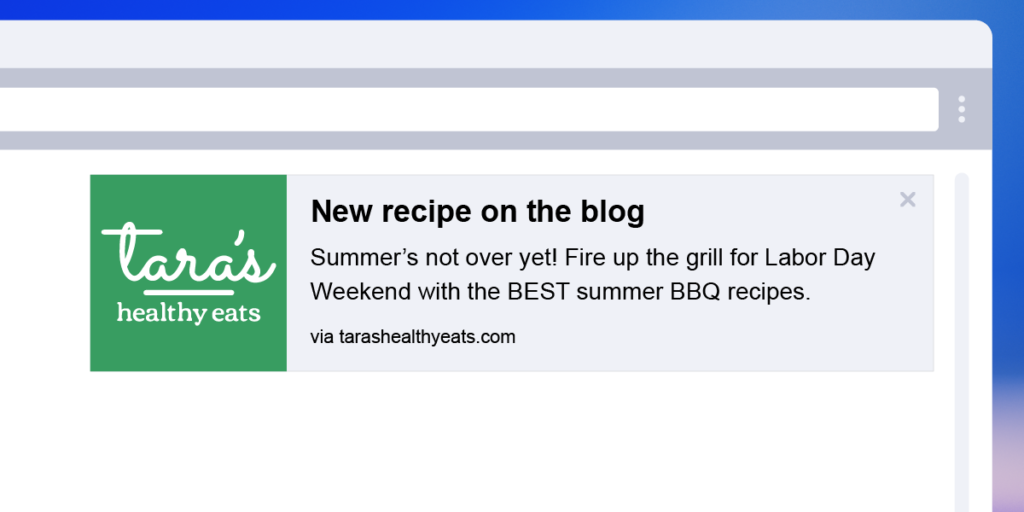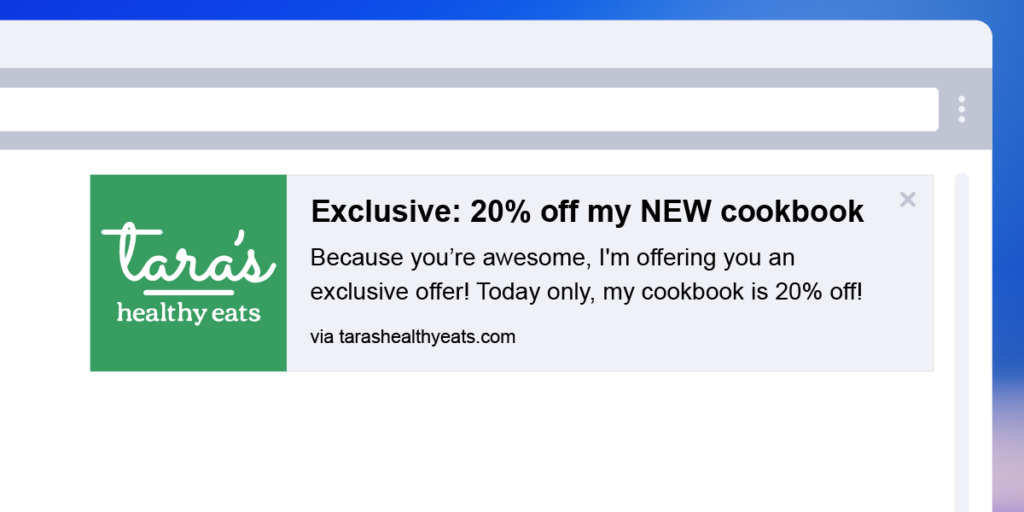
There are over 1.72 billion websites on the world wide web as of October 2019.
Did your jaw just hit the floor?
That’s a staggering amount of competition for web traffic.
Driving web traffic is hard enough. But when you consider returning website visitors converted more than 73% more than first time visitors, it can feel even more overwhelming.
How on earth can you convince people to visit your website twice?
With a tool like web push notifications, you increase your chances of driving visitors back to your site. Simply offer visitors the chance to opt-in to receive updates from you with little effort.
Want to make web push notifications a part of your marketing strategy? Read on to learn how to create push notifications that make it easy to drive traffic back to your website and make more sales.
Why web push notifications enhance your marketing strategy
Web push notifications are a great way to supplement your email marketing strategy. Not only are they a powerful tool to drive web visitors back to your site, they deliver time-sensitive information instantly.
If you’re not familiar with web push notifications, here’s how they work: a website visitor will see a popup modal — like the ones below — asking them to opt-in to receive web push notifications. After they click “Allow,” you can create and send messages to them that will either slide in the upper left or bottom left corner of their desktop, as long as they have a browser open.
It’s also one of the easiest ways for your prospects to get updates. Opting-in to receive push notifications is as easy as pushing a button — literally.
But there are so many more benefits to using web push notifications in your marketing strategy.
Top 5 reasons to use web push notifications
#1 — Reach users when they’re online. A user doesn’t need to be on your website to receive messages from you — nor do they need to be in their inbox. If they are online, they will see your messages.
And if they’re not logged on at the time you send your message, they will see it when they do log on.
#2 — Drive engagement with your brand. Since subscribers have already visited your site at least once and have opted-in to receive messages, they’re eager to engage with your brand.
Send valuable content — like exclusive discounts, product updates, new blog content, event invitations, and more — that you know they’ll love.
#3 — Reduce advertising costs. Web push notifications are a great way to retarget web visitors who may have left your site without making a purchase.
#4 — The opt-in process is super easy. You no longer need to collect subscriber contact information. All the user needs to do is press a button to allow or block notifications.
No email addresses or contact details needed.
#5 — The delivery rate for web push notifications is extremely high. Since web push notifications are browser-based, you won’t experience any issues with spam folders or bounces.
Plus, there’s no need for users to “safelist” you. You can have peace of mind that your messages are being delivered.
How do you send web push notifications that people actually like?
Once you’ve started growing a list of web push notification subscribers, you can start sending messages.
Remember: people signed up to hear from you because they believe you have something to offer them. Whether they love your products and want to get offers, admire you and the content you publish, or simply want to keep in touch, they’re willing to sign up because they think you can help them.
One of the first steps to finding out what value you can offer your audience is to uncover their pain points. Knowing your customers and prospects can have a big impact on your marketing efforts.
When you know what they’re struggling with, you can create solutions and position your product or service in a way that can help them.
Ultimately, the goal is to drive subscribers to take action. You want them to click on the push notification to be taken back to your website and check out what you offered.
Here are some tips for writing web push notifications that people want to click on.
Tips to create web push notifications that get clicked
Value first
Providing value is key to reciprocity in marketing. You must first build a trusting relationship before you try to sell to your audience.
However, the term “value” is vague. “Value” can look different for different audiences.
Maybe that means educational ebooks or articles. Or exclusive promotions or discounts. Or even invitations to webinars or events.
That’s why it’s important to take the time to understand your audience’s pain points — so you can create valuable content that will resonate with them.
Use power words
Power words, or trigger words, are those that get a subscriber to take action. They usually evoke an emotion within subscribers, and are an excellent way to drive them to action.
In fact, some trigger words are super common in everyday language. We put together 8 power words for you to use in your emails, but they also have an impact in any marketing copy you write.
Some examples of trigger words include: “now,” “you,” “new” and “free.”
Create a sense of FOMO
FOMO — or fear of missing out — is a common psychological experience when someone feels they’re missing out on something great. It’s triggered by a feeling of scarcity — which means that something is only available in limited quantities or for a limited time.
People are more likely to act with a sense of urgency if something is only available for a short period of time.
Exclusivity
Exclusivity can be used in marketing to make people feel a sense of belonging, which in turn can make them feel important and valued.
Make your subscribers feel special by offering them exclusive deals, promotions, or content. Or play up the benefits of being part of a members-only program if that’s part of your business strategy.
Keep it short & sweet
When creating web push notifications, it’s important to keep in mind that each section has different character and content restrictions.
While different across web push notification providers, a general rule of thumb for content limitations is: 120 characters for the message, 50 characters for the title, 15 characters for the call to action, and one image. So if you want to communicate effectively with your audience, your content must be short and sweet.
Think: what is the most important thing that my subscribers need to know in order to want to click this? The answer to that question will help you pack as much punch in one short block of text as possible to drive action.
Use emotion
Bring emotion into your push notifications through using humor, empathy, and instilling a sense of belonging by referencing trends and pop culture references.
But before you start referencing the latest episode of whatever TV show is popular at the time, answer two questions:
- Will your audience understand the reference?
- Does your brand voice support the reference?
Ultimately, emotion only works in marketing if it’s genuine and serves your audience.
Example: How a food blogger can send web push notifications
Let’s look at a food blogger who wants to make more sales using the web push notification tactics we talked about above.
Invitation to a live cooking class

New recipe on the blog

Limited-time discount

Do you use web push notifications?
We want to hear about it. Let us know in the comments if you use web push notifications and how they’ve helped you drive more website traffic and sales.
source https://blog.aweber.com/digital-marketing-2/send-web-push-notifications-that-drive-sales.htm
No comments:
Post a Comment